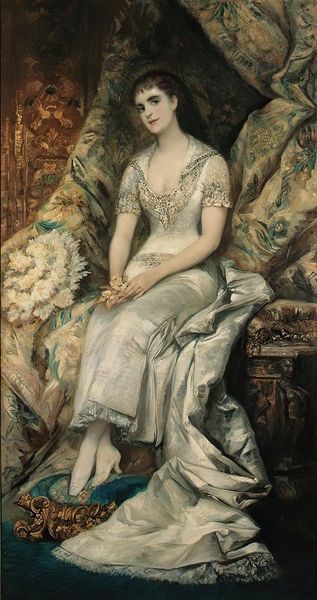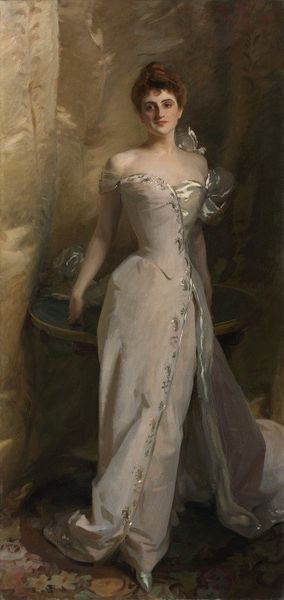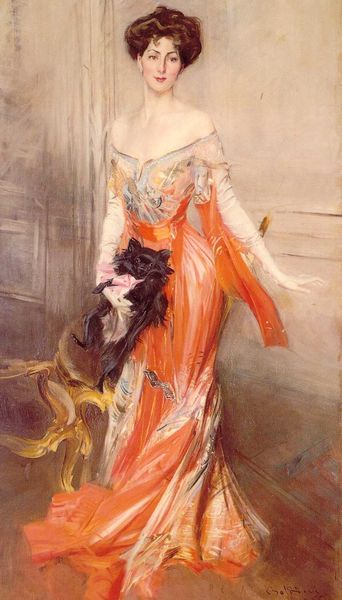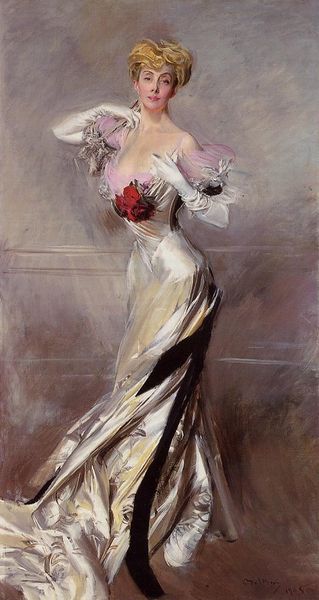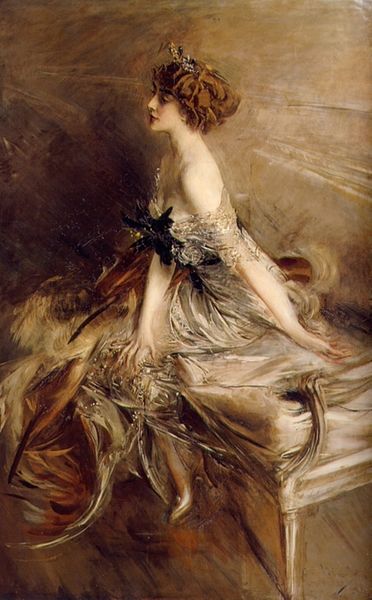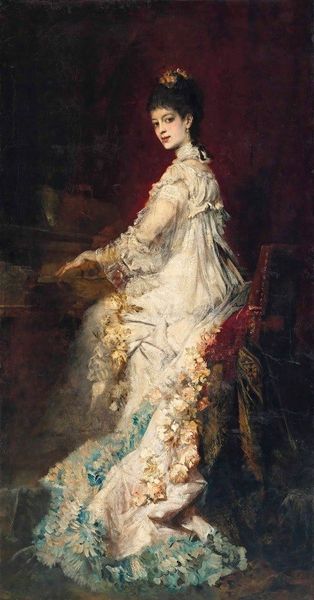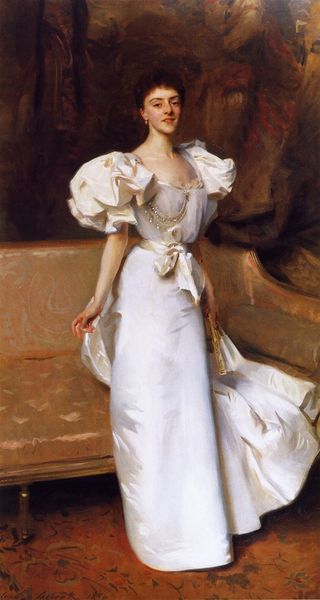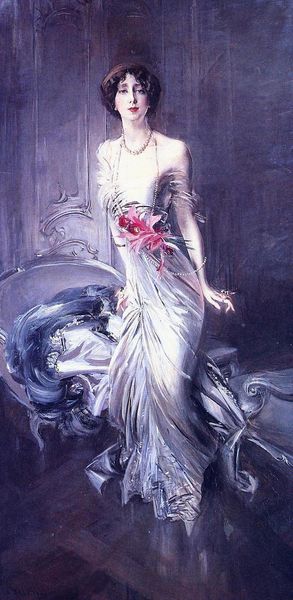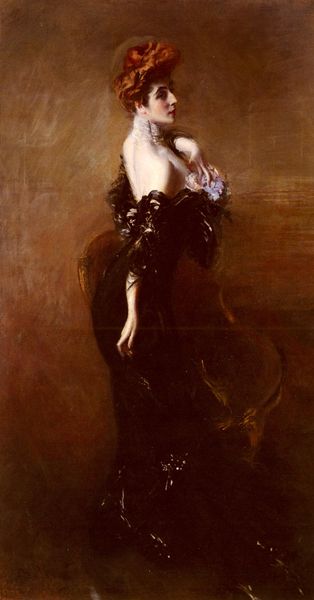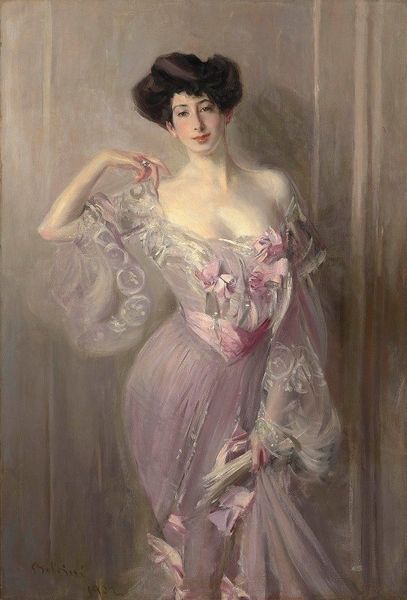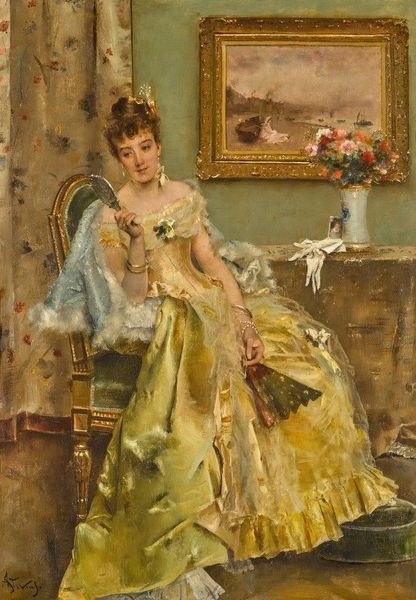
Copyright: Public domain
Curator: Giovanni Boldini painted this stunning portrait, titled "The Black Sash," around 1905. What captures your attention first? Editor: The fluidity! It’s like a snapshot of a fleeting moment, a dress rippling just so, on the cusp of movement. Is that silk? You can almost hear the rustle. Curator: It is primarily rendered with oil on canvas, and Boldini really employed impasto techniques to achieve that tactile quality. The lady’s gown seems to absorb and reflect the light. That striking sash creates such a dynamic focal point, snaking from her shoulder down the back of the dress. What does this color add? Editor: It is stark, isn't it? Black as a symbol of power, elegance but also defiance and even subversion during the early 20th century. Women like her, captured during their toilette... This tells me a story about burgeoning self-awareness, even rebellion against strict social roles, while clearly embedded still within them. How radical. Curator: Fascinating! Consider too how her posture – averted gaze, hand just touching the fabric – adds to that tension. What's going through her mind? Boldini was of course operating within specific socio-political constructs himself. A "flâneur," an observer, not always critically aware, more absorbed by surface appearance of society’s elites, right? Editor: True. There is that complicated dance between artistic freedom and the constraints of the patrons, galleries and critics of the era. You get a hint of "intimism" in here too, the sense of being inside a private space, bearing witness. But who are we meant to be within the painting? Servants, intruders, voyeurs? That dynamic between model, artist and audience is intriguing. Curator: Absolutely. Her elegant attire also reminds us that objects themselves carry cultural and personal symbolism. And the setting – a room both ornate yet indistinct, blurred – that seems psychologically relevant to me. It reinforces an ephemeral moment suspended just outside ordinary constraints. Editor: Yes. This artwork makes a fascinating study of the power of image, how both the seen and unseen interplay when representing femininity and society. Curator: Absolutely, it opens many perspectives for understanding social transition, the history of gender as embodied in an iconic moment through painting. Editor: For me, reflecting on that initial impression of light and silk against the shadow, I’m drawn back to those flickering moments when surface truly holds deeper cultural meaning.
Comments
No comments
Be the first to comment and join the conversation on the ultimate creative platform.
